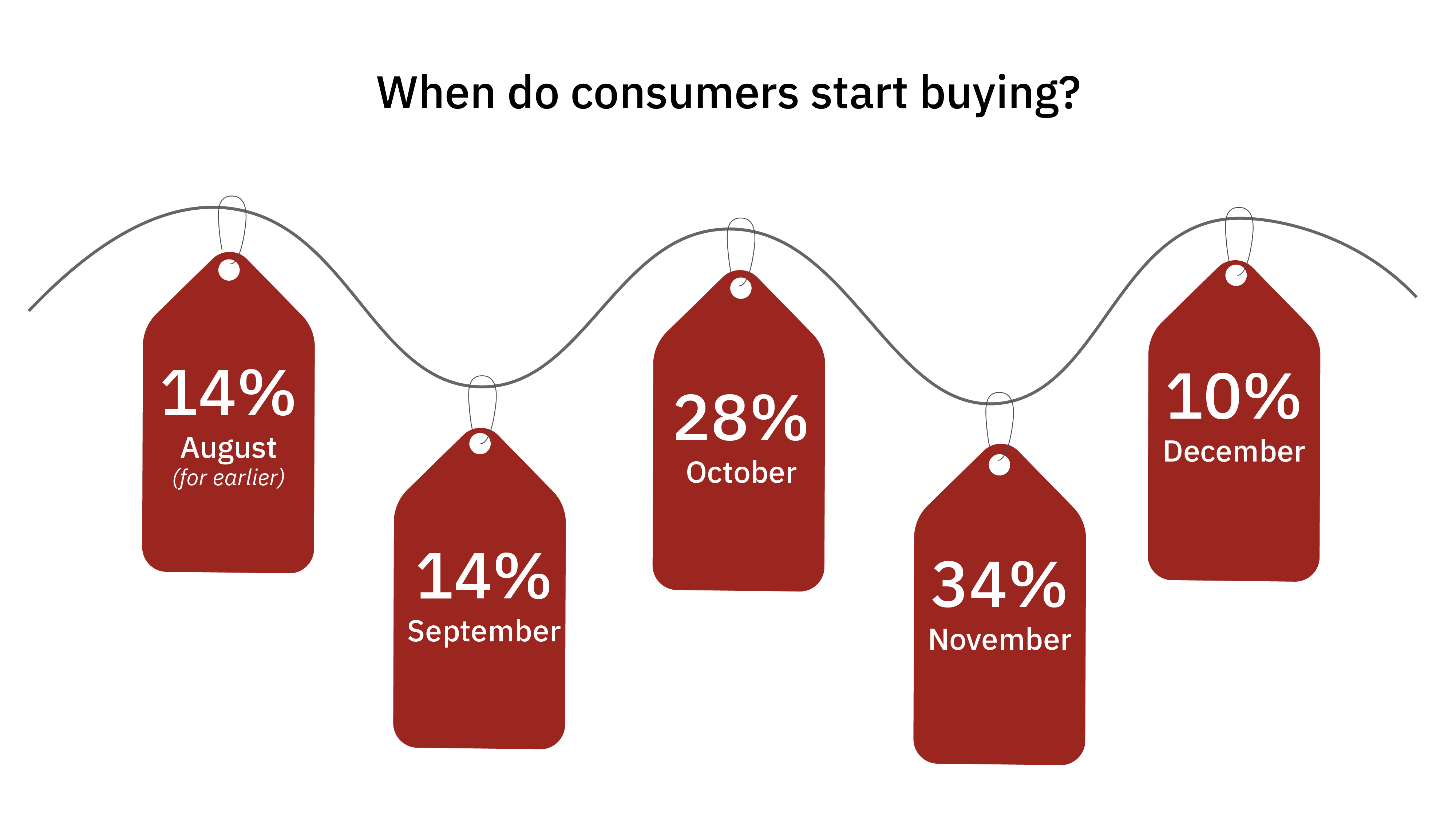
How to Prepare for E-commerce Peak Season?
Updated on October 17, 2024
Let's talk about conquering those peak surges in your call center activities.
What is peak season and how can it affect your business?
The e-commerce peak season is upon us! If you’re an online retailer, now is the time to make sure you're prepared for the influx of holiday shoppers. But what exactly is it, and why does it happen at the end of the year?
Let’s see. Towards the end of the year, we don’t only have Christmas sales, but Halloween, Black Friday, Cyber Monday, Hanukkah, and New Year’s Eve. Not to mention many other occasions that see consumers rush to place orders. It’s no wonder then that 44% of retail businesses take a quarter of yearly sales in the peak period - and 40% take more than half.
Additionally, consumers are moving more and more to the online space. Whether it’s hunting for presents or decorations, it seems that 15% of retailers predict that online orders will account for a quarter of their peak season sales. Having a peak management plan in place is starting to seem like the way to go.
As we know, more consumers means more traffic, which could have an impact on your customer service and experience. Luckily, we’ve put together some tips on how to prepare for e-commerce peak season.
What should you keep in mind when planning?
How are consumers buying?
While desktops are still the most popular way to buy online, there is a growing trend for people to use their mobile phones and tablets. In fact, last year mobile devices accounted for 22% of all e-commerce traffic and 10% of sales on Cyber Monday, the biggest online shopping day of the year.
This is important to consider when planning for e-commerce peak season, as the kinds of channels you have available not only for consumers to order through, but to contact you by, will determine how well they rate the overall experience with your business.

What are consumers buying, and when?
Clothes, books and toys are always popular items during the e-commerce peak season, but this year there is likely to be a big increase in the number of people buying experiences such as tickets and memberships as presents. This also means that consumers are likely to start buying sooner rather than later.
As an example, e-commerce giant Amazon announced that in the lead up to Christmas last year, their peak day for customer orders was December 15th with over 18 million items being shipped worldwide. This was a 60% increase from 2013’s peak shopping day.

Let’s get our shopping list together.
1. Make sure your website is mobile-friendly and can handle the traffic.
This is critical! Nothing will turn off customers more than a slow, unresponsive website. If you're not sure your site can handle the traffic, consider using a content delivery network (CDN) to offload some of the strain.
In the same vein, with more and more people using mobile devices to shop online, it’s important to make sure your website is optimized for these devices. This means having a responsive design that automatically adjusts to the different screen sizes, or even creating a dedicated mobile app.
2. Plan ahead for customer service.
You'll likely see an increase in customer service inquiries during the e-commerce peak season. Make sure you have enough staff on hand to handle the volume, or consider using an automated customer service solution.
This is where technology such as chatbots, voicebots, automatic replies, or IVR can come in handy and help to take the strain off your customer support teams.
3. Prepare your inventory and make sure checkout is smooth.
This is especially important if you sell physical goods. Make sure you have enough product in stock to meet the demand, and that your products are properly packaged and ready to ship. You’ll also likely be dealing with a lot of logistical queries and issues like returns, which can make or break a customer experience.
Checkouts are often where things can go wrong. Make sure your process is streamlined and easy to use, so that customers can complete their purchases without any hiccups.
4. That’s a good deal!
Everybody loves a bargain, so get the word out about your special deals and promotions well in advance. This will help build excitement and get customers to your website when they're ready to buy.
It could be anything from free shipping to percentage discounts on certain products or services - whatever it is, make sure your consumers know about it well in advance of e-commerce peak season.
5. Use data to forecast.
As an e-commerce business, you’re likely to have a lot of data on your customers and their buying habits. By analyzing it, you can get a better understanding of when your customers are most likely to shop, what they’re likely to buy and how much they’re likely to spend. This information can help you to better prepare your inventory, staff your customer service team and promote your deals and discounts.
This kind of information also helps you personalize the experience for your customers, through targeted emails with recommendations, or even displaying relevant products on your website based on a customer’s previous purchases.
“Where’s my package?”
Some of the most common issues consumers face during e-commerce peak season are extended delivery times, tight returns deadlines, and trouble with shipping or tracking packages. It’s a busy time for us all, so it’s important to be prepared for any shipping or customer service issues that may arise.
One way to do this is to offer customers the option to pick up their orders in-store. This can help to avoid any shipping delays, and it also gives customers the chance to see your products in person before they make a purchase.
Another way to address shipping issues is to offer customers the option to pay for expedited shipping. This will ensure that their orders arrive on time, even if there are delays with standard shipping.
In terms of customer service, it’s important to have enough staff on hand to handle the increased volume of inquiries. You may also want to consider using an automated customer service solution, such as a chatbot, to help with any basic inquiries. You may also see an increase in returns, which is what we’ll cover next.
How to preempt e-commerce returns during peak season?
E-commerce returns are at an all-time high and are only expected to increase in the coming years. In fact, e-commerce return rates are estimated to be as high as 30%. That’s why it’s important for e-commerce businesses to have a returns strategy in place..
Offer a generous return policy.
If your customers feel as though they can easily return items that don’t meet their expectations, they’ll be more likely to shop with you.
Make returns a breeze.
With clear instructions to follow, and a streamlined process, returning items should be as easy as possible for your consumers.
Encourage early birds.
By incentivizing customers to start their shopping earlier, you can avoid last-minute returns. Discount codes or free shipping can be a great way to entice them.
Empower your customer service staff.
Your people are your greatest resource, and the voice that can leave a customer satisfied and loyal to your business. Keep them informed, communicate updates regularly, and train them to feel empowered in making decisions that can make a difference to the customer’s issue.
In conclusion.
If you have a strong peak management plan in place already, then the holiday season should be one of merriment and joy. Use data, look ahead, and always keep in mind what could make this the most wonderful time of the year for your consumers - and your business.
